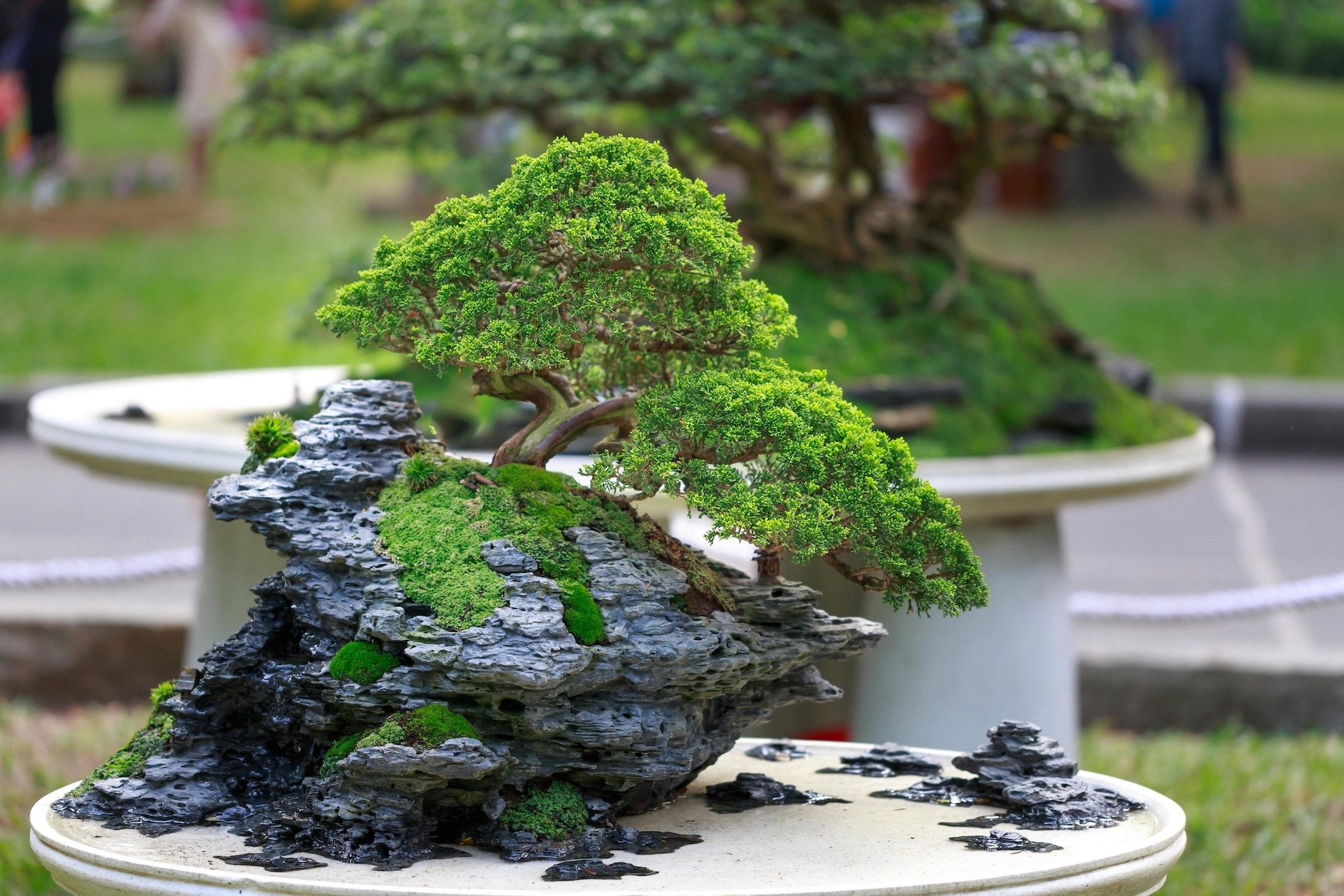
A rock planting gives your bonsai a powerful, natural character. As if the tree has been growing for decades in a rugged mountain landscape, shaped by wind, sun, and time. Tree and stone form a living whole that evokes both peace and imagination.
There are several ways to combine bonsai and stone. In this blog, we’ll explain two popular styles:
🌲 Conifers on top of the stone
🍁 Deciduous trees growing from below over the stone
Each style has its own appearance and approach. Which one suits your bonsai?
🌲 Conifers on Top of the Stone
Conifers like pines (Pinus) and junipers (Juniperus) naturally grow on dry, rocky slopes. They are hardy, slow-growing, and remain visually strong even in the most minimalistic settings.
In this style, the tree is planted on top of the stone. The roots anchor in cracks or are secured with keto clay. Usually, there is little or no contact with soil. You create a bonsai that looks like it survives on sheer willpower.
What you need:
- A porous stone with texture or holes
- Keto (Japanese clay) to secure the roots
- Juniperus or Pinus with long, flexible roots
- Bonsai wire or raffia for temporary fixing
- Optionally a shallow tray or pedestal
Tip: Make sure the stone is stable. You can place it in a tray with gravel or substrate around it for extra support.
🍁 Deciduous Trees from Below Over the Stone (Root-over-Rock)
Deciduous trees like Japanese maple (Acer palmatum) or zelkova are perfect for the root-over-rock style. The tree is placed at the base of the stone. The roots grow from below, over the rock, and down toward the soil.
Over time, these roots thicken and become woody. What once was just support becomes a visible part of the trunk – an impressive, natural image.
What you need:
- A stone with grooves or cracks
- A young deciduous tree with long, flexible roots
- Keto to temporarily hold the roots
- Substrate (akadama, lava, pumice)
- A bonsai pot with drainage holes
🌑 Forming a Keto Ball Around the Roots
For root-over-rock plantings, it helps to form a keto ball around the roots. This Japanese clay keeps the roots moist and provides stability while growing.
How to do it:
- Rinse the roots clean.
- Guide them over or between the stone.
- Make a firm ball of keto (optionally mixed with akadama or sphagnum moss).
- Press the clay around the roots so they fit tightly against the stone.
- Secure with wire or raffia if needed.
- Place everything in a pot and fill in with substrate.
- Keep misting regularly during the first weeks and protect the planting from drying out.
🌿 Why Choose?
Both styles bring something special:
- Conifers on top of the stone give a minimalistic, powerful, and aged impression.
- Deciduous trees from below appear natural, graceful, and integrated with their environment.
You can also combine them. Think of a Japanese black pine on top of a rock and a maple winding upward from the base of the same stone. This creates a living miniature landscape full of contrast.
📷 Share your creation on Instagram or Facebook with #tSekaibonsai – we can’t wait to see it!
